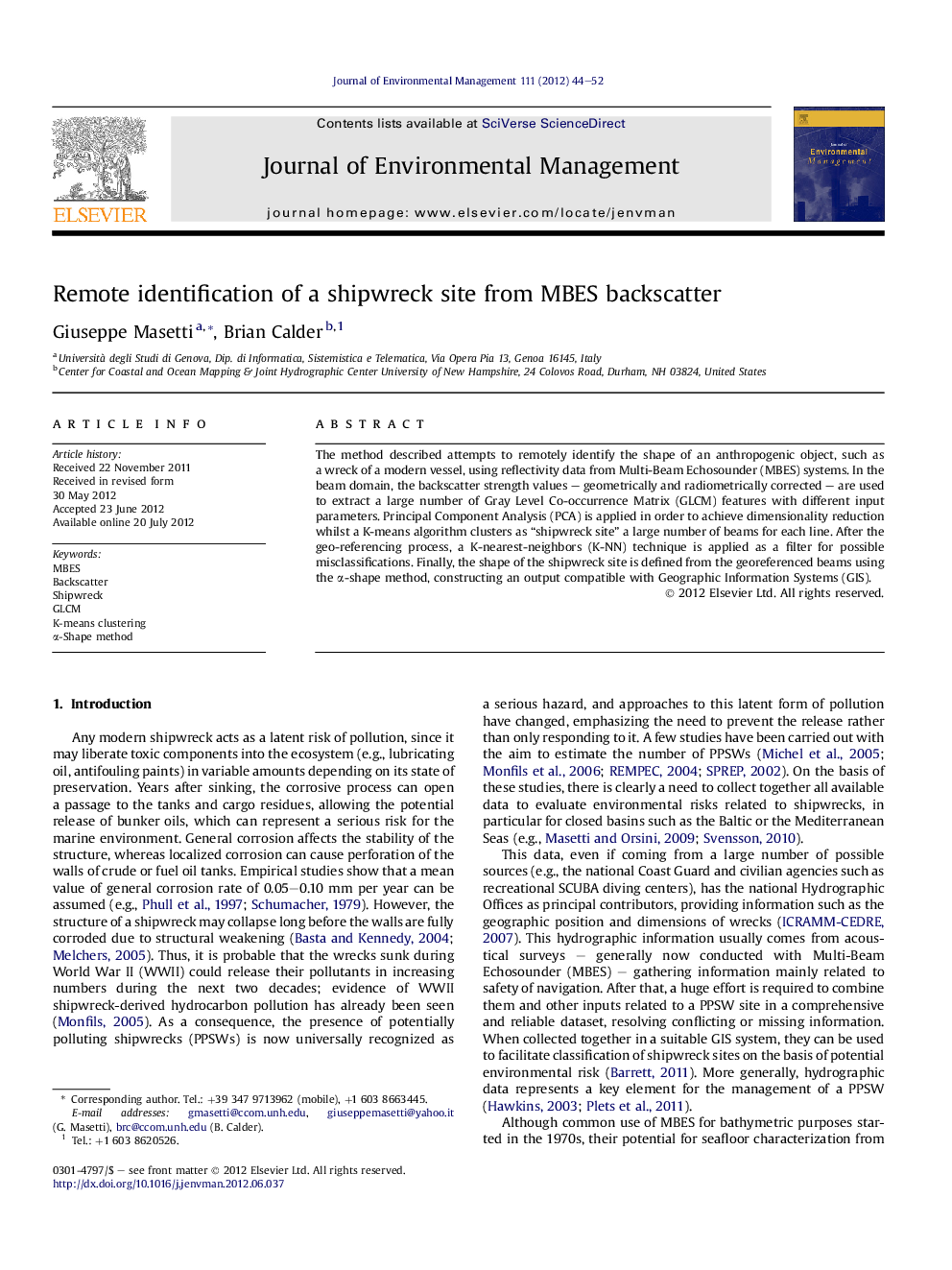| Article ID | Journal | Published Year | Pages | File Type |
|---|---|---|---|---|
| 1056539 | Journal of Environmental Management | 2012 | 9 Pages |
The method described attempts to remotely identify the shape of an anthropogenic object, such as a wreck of a modern vessel, using reflectivity data from Multi-Beam Echosounder (MBES) systems. In the beam domain, the backscatter strength values – geometrically and radiometrically corrected – are used to extract a large number of Gray Level Co-occurrence Matrix (GLCM) features with different input parameters. Principal Component Analysis (PCA) is applied in order to achieve dimensionality reduction whilst a K-means algorithm clusters as “shipwreck site” a large number of beams for each line. After the geo-referencing process, a K-nearest-neighbors (K-NN) technique is applied as a filter for possible misclassifications. Finally, the shape of the shipwreck site is defined from the georeferenced beams using the α-shape method, constructing an output compatible with Geographic Information Systems (GIS).
► The method remotely identifies the shape of a shipwreck site, allowing monitoring and change detection. ► The MBES backscatter is used to extract specific GLCM indicators based on PCA. ► The shape is defined from labeled beams using the alpha-shape method. ► The output represents a spatial object compatible with GIS methods.
